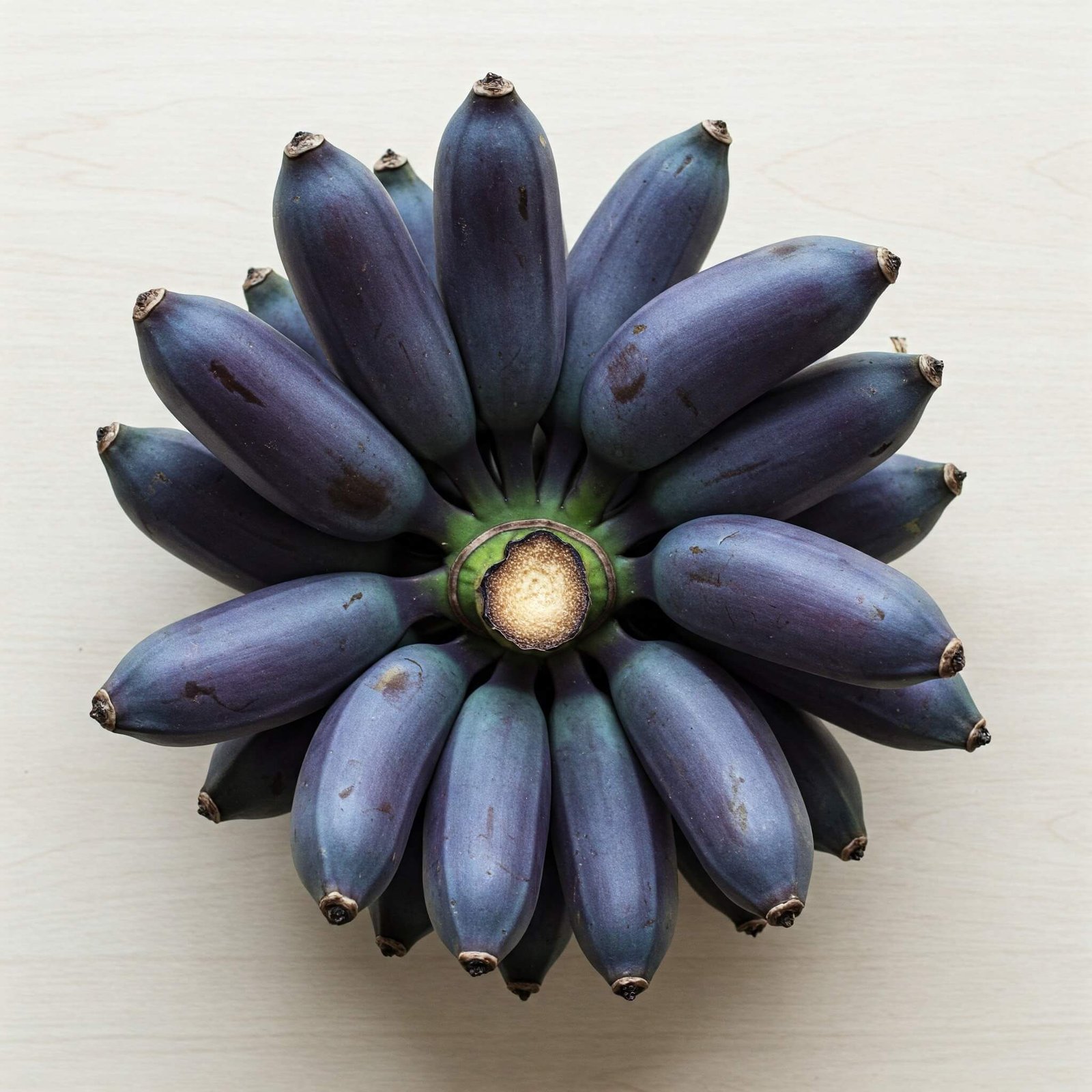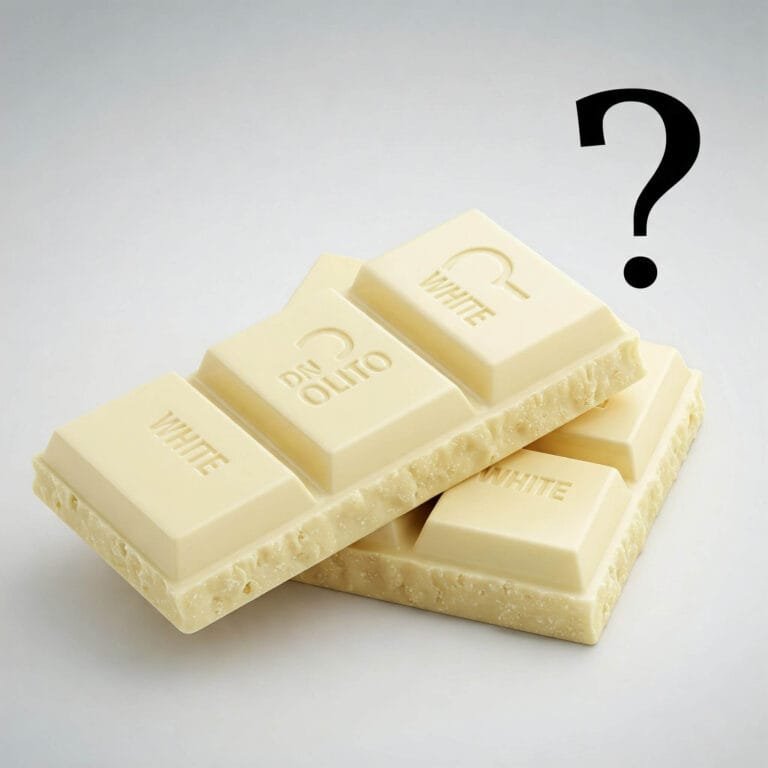The Blue Java Banana: Nature’s Vanilla Ice Cream on a Tree

Imagine biting into a banana that tastes like creamy vanilla ice cream, with a texture so silky it melts in your mouth—all while sporting a stunning blue-green peel that looks like it belongs in a tropical fairy tale. Meet the Blue Java Banana, a fruit so magical it’s earned nicknames like “Ice Cream Banana” and “Hawaiian Banana.” In this blog post, we’ll dive into the whimsical world of this extraordinary banana variety, exploring its origins, unique traits, and why it’s capturing the hearts (and taste buds) of foodies and gardeners worldwide.
1. Origins and Nicknames: The Banana with a Fan Club
The Blue Java Banana (Musa acuminata × balbisiana) is a hybrid cultivar believed to have originated in Southeast Asia but is now grown in tropical regions like Hawaii, Fiji, the Philippines, and parts of Central America. Its striking blue-tinged peel and surreal flavor have spawned a host of affectionate aliases:
- Ice Cream Banana: For its custard-like texture and vanilla-like sweetness.
- Cenizo: A name used in Central America, meaning “ash-colored.”
- Hawaiian Banana: Though not native to Hawaii, it thrives in the islands’ volcanic soil.
This banana isn’t just a fruit—it’s a conversation starter.
2. Appearance: A Blue Peel That Defies Expectations
The Blue Java’s most eye-catching feature is its blue-green peel, which gives it an otherworldly vibe. But don’t let the bold exterior fool you—as the banana ripens, the peel transforms into a soft, pale yellow, signaling its readiness to eat. The fruit itself is plump and slightly shorter than common Cavendish bananas, with a pale, creamy flesh that’s almost iridescent.
3. Flavor and Texture: Why It’s Called “Nature’s Ice Cream”
The Blue Java’s flavor is where the magic truly happens. When ripe, its flesh is:
- Creamy: Think ripe avocado or soft-serve ice cream.
- Sweet but Subtle: Notes of vanilla, honey, and a hint of citrus.
- Low in Acidity: Unlike tangier banana varieties, it’s mellow and comforting.
This unique profile makes it a hit in smoothies, desserts, or simply eaten fresh. For a guilt-free vegan “ice cream,” blend frozen Blue Java bananas into a silky treat—no added sugar needed!
4. Growing Your Own Blue Java Banana Tree
Dreaming of harvesting your own ice cream bananas? Here’s what you need to know:
- Climate: Thrives in USDA zones 9–11 (tropical to subtropical). It can tolerate brief cold snaps but hates frost.
- Size: The tree grows 15–20 feet tall, with wide, wind-resistant leaves.
- Patience Pays: Takes 9–15 months to fruit after planting.
- Sun and Soil: Loves full sun and well-draining, nutrient-rich soil.
Pro tip: Blue Java bananas are cold-hardier than most banana varieties, making them a favorite for adventurous gardeners in marginally tropical zones.
5. Culinary Uses: Beyond the Peel
While delicious raw, the Blue Java shines in creative recipes:
- Nice Cream: Blend frozen chunks with cocoa powder or berries.
- Smoothie Bowls: Top with granola and coconut for breakfast bliss.
- Baking: Use mashed flesh in pancakes, muffins, or banana bread.
- Grilled: Caramelize slices on the grill for a smoky-sweet dessert.
Fun fact: In the Philippines, unripe Blue Java bananas are boiled and served as a starchy side dish, similar to plantains.
6. Nutritional Benefits: A Sweet Dose of Goodness
Like all bananas, the Blue Java packs nutrients in every bite:
- Potassium: Supports heart health and muscle function.
- Vitamin C: Boosts immunity and skin health.
- Fiber: Aids digestion and keeps you full longer.
- Natural Sugars: A quick energy boost without processed sugars.
Its low acidity also makes it gentler on sensitive stomachs compared to tart fruits.
7. Cultural and Environmental Significance
In Hawaii and the Pacific Islands, the Blue Java banana is more than a snack—it’s part of the cultural fabric. Banana plants (called mai’a in Hawaiian) are considered sacred in Polynesian mythology, symbolizing prosperity and connection to the land.
Environmentally, banana plants are sustainability superstars:
- Zero Waste: Leaves are used as eco-friendly food wrappers.
- Fast-Growing: Rapid growth helps combat soil erosion.
- Pollinator-Friendly: Flowers attract bees and hummingbirds.
8. Where to Find Blue Java Bananas
While not as common as Cavendish bananas in supermarkets, Blue Javas are gaining traction:
- Farmers’ Markets: Check tropical fruit vendors.
- Online Nurseries: Purchase plants or suckers to grow your own.
- Travel: Seek them out in Hawaii, Southeast Asia, or Central America.
Conclusion: The Banana That’s Anything but Ordinary
The Blue Java Banana is proof that nature still has surprises up its sleeve. With its mesmerizing color, ethereal flavor, and creamy texture, it’s a fruit that bridges the gap between everyday snacks and gourmet indulgence. Whether you’re a gardener craving a tropical challenge or a foodie hunting for your next culinary muse, the Blue Java is a delicious reminder that adventure can come in the most unexpected packages—even a banana peel.
Try This! If you score a Blue Java, slice it lengthwise, drizzle with honey, sprinkle with cinnamon, and thank us later. 🍌✨
Hungry for more food adventures? Share your Blue Java stories or tag us in your banana-based creations with #IceCreamBananaMagic! #zestbites





